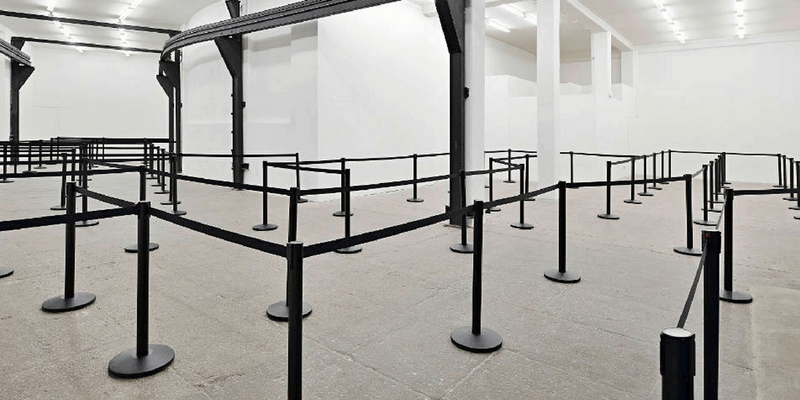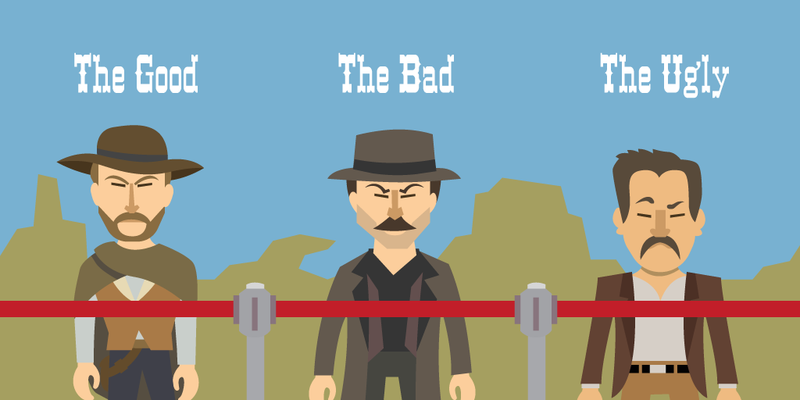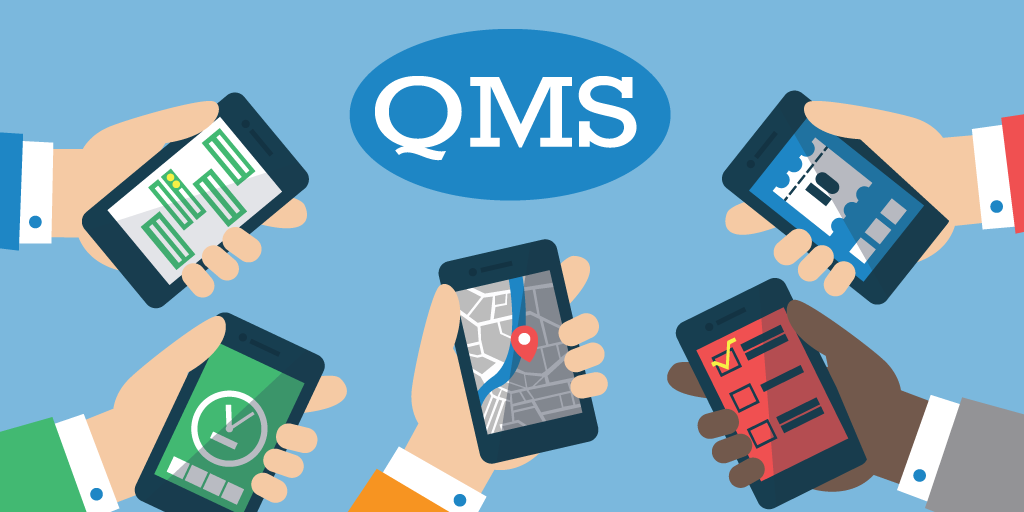Last updated on 13 January 2022
It’s hard to accuse us of sympathizing with queue barriers. We aren’t exactly singing praises to the concept of objects physically barring customers from the waiting area.
But surely we’re just being Negative Nancies here. Obviously, there are positive things to cover when talking about queue barriers, right?
Let’s switch things up for a change. In this article, we’re going to talk about The Good, the Bad, and the Ugly sides of queue barrier management — precisely in that order.
The Good: the pros of queue barriers

Queue barriers, as you might have guessed, are not a recent invention. You can call them belt barriers, rope barriers, queue barriers or — if you’re feeling positively fancy right now — stanchions.
Queue barriers are often used in event management for crowd control. For example, at airports, where crowd control and keeping everything organized is really important.
Essentially, rope barriers are used to line routes and prevent overcrowding.
The main point of these physical barriers is that they’re supposed to prevent injuries, tramplings, aggressive behaviour, etc.
On the surface, queue barriers are a simple, if not to say primitive, crowd control tool.
They usually take form of several stands connected together with retractable belts. They demarcate the queue area, funnelling all customers into one or more lines.
A rope barrier is designed to prevents line-cutters and queue-jumpers.
Since it’s a physical object, it may be quite successful at it.
If you’ve ever found yourself in the middle of a line marked by queue barriers, you know that it’s not easy to leave the queue, not to mention jump in front of somebody.
So in the end, queue barriers do offer some help with organization. (And we’re going to discuss the dark side of this organization later on.)
And that’s… about it. Disappointing, right?
But when it comes to queue barriers, it’s hard to stay positive and verbose at the same time. So let’s go for the next thing on our checklist — THE BAD.
The Bad: the cons of queue barriers

So the good news is that rope barriers prevent queue-jumping.
And the bad news is that they prevent queue-jumping.
Entered the queue but now want to get out? Too bad! You’re now committed to this line, might as well enjoy the ride, with its brisk one-feet-a-minute pace.
Imagine yourself standing in a queue for god knows how long, only to realize you’ve been standing in the wrong queue. Or that the service desk you’ve been queuing for is unavailable at the moment.
If you’ve ever been at the venue — say, a movie theater — with too many different lines to count, you know the dread of having to find the exit in this labyrinthine mess.
Are you a customer or an ancient Greek hero looking for a minotaur?
There’s no good way to exit the queue unless you’re at the very end or beginning of it. Otherwise, you have to awkwardly step over the rope or crawl underneath it like a toddler.
It’s not the end of the world, but customer service consists of myriads of tiny elements.
Even a few bad elements can sour the entire experience.
And what’s with the Tetris-inspired shapes, anyway? The shortest distance between two points — meaning you and your destination — is a straight line.
But all too often, queue barriers take design cues from snakes and other reptiles. They slither and serpentine all over the place.
While it may be pretty to look at, the novelty quickly disappears when you have to actually navigate this maze.
A simple task of “enter a store, find a cashier, walk up to them” transforms into an unnecessary treasure quest.
Walk 10 feet north, then turn left and walk 5 feet, then take multiple rights and keep walking north until the next left turn.
Is it really the best, most practical use of space? Why not simply let your customers wander around while they're waiting and not hold them hostage?
It is such an amazingly terrible oversight, and it’s only made worse once you try zig-zagging along with luggage or a shopping cart.
Honestly, what would your first reaction be if you saw this rat maze in front of you?

Exactly!
(Actually, nevermind. It's a museum exhibition. The reality is so much worse.)
Oh, and when we called stanchion an easy-to-use tool? That’s if the line is straightforward.
But imagine a poor employee having to set up tens of rope barrier stands and organize the place in an effective way. A rewarding task, this is not.
The Ugly: queue barriers' lack of personalization

When we say that companies that use rope barriers treat their customers as cattle or prison inmates, we don’t mean that this is their intent, necessarily.
But it sure comes off as such.
Is it a coincidence that so many dystopian movies underscore the bleakness of the future by showing us boring, soul-crushing, one-feet-a-minute queues?
These queues are usually incredibly restricted, with only a few ways in and no way out.
(Looking back at the history of queuing, we can also learn about actual dystopian countries where soul-crushing queues were a common-day occurrence.)
But let’s get back to the queue barriers.
The reason why we’ve always been so against them is not their low efficiency, but the way they reinforce the bad attitude towards customers.
“Customers are objects we can milk money out of, there’s no reason to fuss too much about their wellbeing”.
As a result, customers get trapped in this unsightly maze of ropes, people and bad customer service. Not to mention, stanchions also cause anxiety in customers.
It’s like you’re the only child of overprotective parents — everything is closed off, you have no way to run and nothing to interact with.
This is supposedly done in the name of greater safety.
Queue barriers are said to protect from health risks and hazard, but here’s a question — do they really?
Remember that these are physical, tangible objects. You’re not in an inflatable castle, and if you fall and hit something on your way down, you’re not going to bounce back.
So if a person falls in proximity with these barriers, the likelihood of him hitting himself becomes that much more serious.
There’s been a terrifying story about a 10-year-old boy being crushed by queue barriers.
Now, these weren’t exactly rope barriers so much as special display units, though the point still stands: demarcating your queues with physical objects is a serious risk.
At best, queue barriers aren’t protecting your from existing hazards. At worst, they are creating new ones.
If you’re a bright-eyed company still using these queue barriers, I hope we’ve made our case. Ditch these unsavory queuing tools and get on with the times!
In the end, queue barriers are not only barely effective, they are also dehumanizing and pose serious health risks.
Let us show you the way. Open your mind, for you don’t need any special barriers to make waiting experience safe, clear and straightforward.
You’re only one click away from getting yourself a queue management game-changer. Sign up for a free 14-day trial of Qminder, and forget queue barriers like a bad dream that’s overstayed its welcome.






